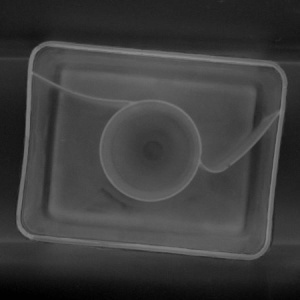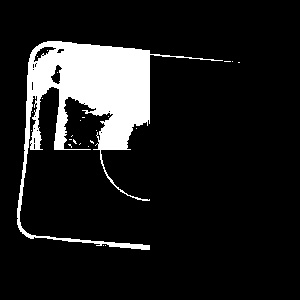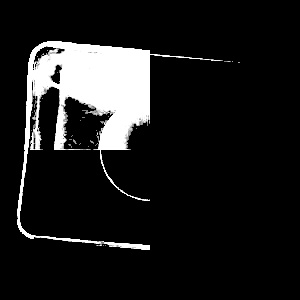You are here: Start » Function Reference » Image Thresholding » ThresholdImage_Relative
ThresholdImage_Relative
Thresholds an image with a different threshold value for each pixel (inBaseImage(x, y) + inValue).
| Header: | AVL.h |
|---|
Syntax
void avl::ThresholdImage_Relative ( const avl::Image& inImage, atl::Optional<const avl::Region&> inRoi, const avl::Image& inBaseImage, atl::Optional<float> inMinRelativeValue, atl::Optional<float> inMaxRelativeValue, float inFuzziness, avl::Image& outMonoImage )
Parameters
| Name | Type | Range | Default | Description | |
|---|---|---|---|---|---|
 |
inImage | const Image& | Input image | ||
 |
inRoi | Optional<const Region&> | NIL | Region of interest | |
 |
inBaseImage | const Image& | Pixels of this image are subtracted from inImage before thresholding | ||
 |
inMinRelativeValue | Optional<float> | 128.0f | Minimum relative value of a pixel that is considered foreground (Auto = -INF) | |
 |
inMaxRelativeValue | Optional<float> | NIL | Maximum relative value of a pixel that is considered foreground (Auto = +INF) | |
 |
inFuzziness | float | 0.0 -  |
0.0f | A tolerance for inMin/MaxRelativeValue that results in intermediate output values |
 |
outMonoImage | Image& |
Description
The operation transforms each pixel value of inImage to the maximum or minimum level thus creating binary image. The result of the transformation depends on the pixel intensity compared with the intensity of the inBaseImage pixels:
- Pixels that are brighter than corresponding pixels of inBaseImage by at least inMinRelativeValue and at most inMaxRelativeValue are transformed to the maximum level.
- Other pixel values are transformed to the minimum level.
If any of the parameters inMinRelativeValue, inMaxRelativeValue is not set, it is assumed to be, accordingly, -infinity or infinity.
Parameter inFuzziness (set to 0 by default) allows to perform fuzzy thresholding which linearly interpolates those pixel values that differ by at most inFuzziness from the border intensities; thus creating smooth transition between minimum and maximum values in the resulting image (see Remarks section).
In the multichannel images the operation uses an average of channel values in each pixel, thus the resulting image is always monochromatic.
Examples
 A sample image used as inImage. |
 A sample image used as inBaseImage. |
 ThresholdImage_Relative performed with inMinRelativeValue = 0.0, inMaxRelativeValue = auto, inFuzziness = 0.0. |
 ThresholdImage_Relative performed with inMinRelativeValue = 0.0, inMaxRelativeValue = auto, inFuzziness = 10.0. |
Remarks
Hardware Acceleration
This operation is optimized for SSE2 technology for pixels of types: 1xUINT8 (for inFuzziness = 0), 3xUINT8 (for inFuzziness = 0).
This operation supports automatic parallelization for multicore and multiprocessor systems.
Errors
| Error type | Description |
|---|---|
| DomainError | Image sizes are not equal in ThresholdImage_Relative. |
| DomainError | Image formats are not the same in ThresholdImage_Relative. |
See Also
- ThresholdToRegion_Relative – Thresholds an image with a different threshold value for each pixel (inBaseImage(x, y) + inValue).

